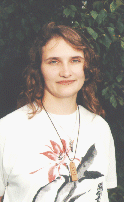

|
SSP 1995 project summary: |
|
|
|

|
Architects often want to model a room, such as an office, so that an approximation of the finished project can be seen. An important part of this model is the lighting. A room needs to be designed in such a way that it takes into account not only direct lighting, but reflections from interior surfaces as well. Furthermore, the colours and reflectivity of the surfaces need to be considered, as well as the quality and amount of the direct lighting. For example, sun light will light a room differently than fluorescent lighting. Also, ``colour bleeding'' needs to be considered, which occurs when one surface, such as blue carpet, reflects onto another surface, such as a white wall, giving the wall a blue-ish cast.
Ray tracing has often been used for such models. However, this method has two significant drawbacks. The first is that the result is viewpoint dependent. Ray tracing shows what light is reflected to a specified viewpoint. However if the viewpoint is changed, all of the calculations need to be redone. The second drawback is that ray tracing does not account for the energy conservation conditions. The radiant energy in a room is a constant which must be preserved.
Another method, which can be referred to as the radiosity technique, can be used which does not suffer from the disadvantages of ray tracing. It models the physical properties of radiant energy to create a more realistic image which is independent of viewpoint. The radiant intensity is calculated for each surface, which is the property that the human eye senses.
The radiosity technique suffers from being computationally expensive. It can take hours to generate an image. This makes modifications to an initial image very time consuming. Methods of speeding up this process are therefore investigated. This includes modifications to the existing code and running the code in parallel, showing that both of these methods result in faster code.
 Carries
Gates worked on this project.
Carries
Gates worked on this project.
Compressed PostScript of the project's final report is available here (144382 bytes) .
 Webpage maintained by
mario@epcc.ed.ac.uk
Webpage maintained by
mario@epcc.ed.ac.uk
|